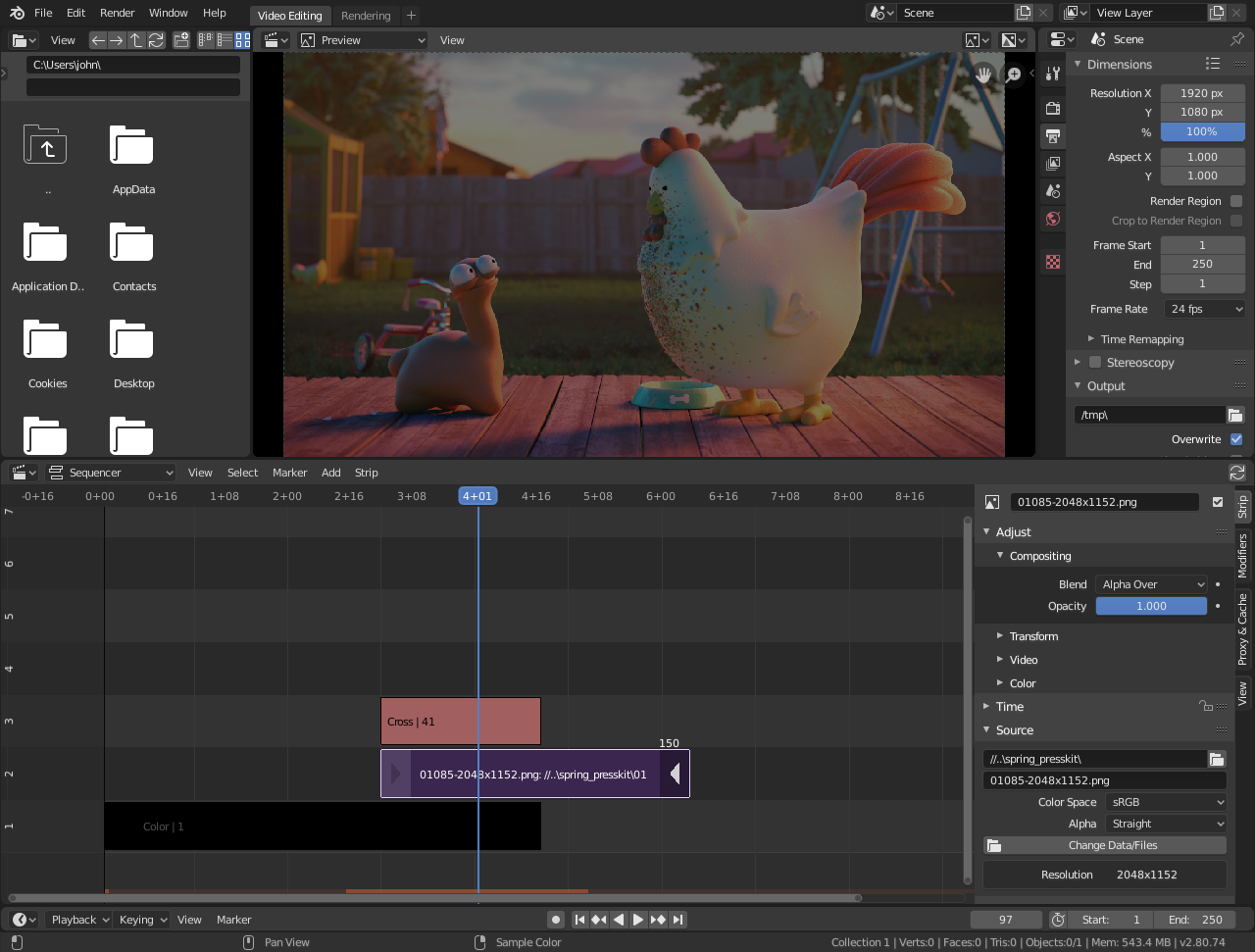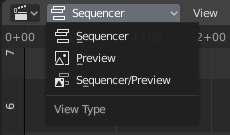简介¶
In addition to modeling and animation, Blender can be used to edit video. There are two possible methods for this, one being the Compositor. However, this chapter describes the other, the Video Sequence Editor (VSE), sometimes shortened to just "Sequencer". The Sequencer within Blender is a complete video editing system that allows you to combine multiple video channels and add effects to them. You can use these effects to create powerful video edits, especially when you combine it with the animation power of Blender!
To use the VSE, you load multiple video clips and lay them end-to-end (or in some cases, overlay them), inserting fades and transitions to link the end of one clip to the beginning of another. Finally, you can add audio and synchronize the timing of the video sequence to match it.

默认视频编辑屏幕布局。¶
视图类型¶

The Video Sequence Editor has three view types for the main view:
- 序列容器
查看时间轴和片段属性。
- 预览
查看预览窗口和预览属性。
- Sequencer/Preview
同时查看预览和时间轴以及两者的属性。
可以在单个工作空间中创建任意视图类型的多个实例。
Note
By default the Sequencer is enabled, however, it can be disabled in the 后期处理.
性能¶
可以通过多种方式改善回放性能。对性能的最大影响是允许视频序列器缓存回放。缓存有两个级别,第一个是内存(RAM)缓存,默认下已启用该级别,但能根据可用的内存量增大。下一个缓存级别是磁盘缓存,该缓存将缓存的片段存储在磁盘上。磁盘缓存通常大于内存缓存,但其速度较慢。这两个缓存选项可在 偏好设置 中设置。
Another way to improve performance is by using Strip Proxies These are used to cache images or movies in a file that is easier to playback by reducing the image quality by either decreasing the resolution and/or compressing the image.